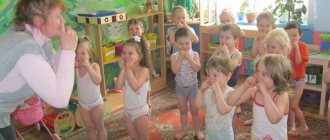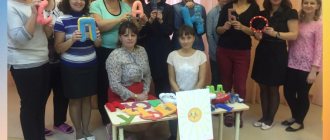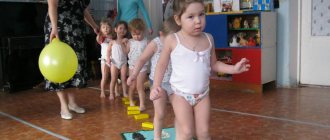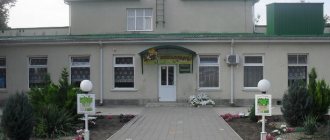The benefits of morning exercises
Morning exercise is a great way to start your day right. Simple exercises are suitable for people of any gender and age. In order for the body to remain in good shape and to maintain youth and health longer, morning exercises should be done daily.
The modern rhythm of life in urban environments is associated with a sedentary lifestyle, which gives rise to many health problems that were previously characteristic only of old age. Morning exercises will improve your metabolism and help give you energy. The body will get used to moderate physical activity and the person will be cheerful and active all day.
What happens to the body
When moving the body, arms, legs, the activity of the heart and blood vessels improves, the functioning of the nervous and respiratory systems is normalized. Daily exercises will help you develop correct posture and help your spine. In the morning, a person is not distinguished by the speed of reactions and active mental activity, because at night all these indicators decrease for proper sleep. Gymnastics helps you wake up, get yourself into working condition and recharge your batteries.
Even small but regular physical activity will have a positive effect on muscle tone, digestive tract and blood circulation. Activity will be useful for any person; saturating the body with oxygen can slow down the aging process. There are contraindications to exercise: elevated body temperature, problems with blood pressure.
The effectiveness of gymnastics for any age
- Gymnastics for adults. It is especially useful for a sedentary lifestyle, as well as for those who suffer from frequent mental stress and drowsiness. Exercise will provide a whole range of benefits:
- prevention of atherosclerosis;
- saturating the brain with oxygen, improving concentration and attention;
- body weight control;
- increasing immunity;
- strengthening the heart muscle;
- prevention against scoliosis and osteochondrosis.
A set of exercises will help get rid of the feeling of weakness and irritability that are a consequence of lack of movement, and will lift your spirits.
For children, morning exercises will also bring many benefits:
- developing healthy lifestyle habits;
- cheerfulness, good mood for the whole day;
- muscle strengthening;
- improvement of motor activity;
- completeness of physical development;
- improvement of brain activity.
Even older people should do gymnastics in the morning; the set of exercises may differ, but the main thing here is regularity. Exercise will improve your metabolism, help avoid problems with joints and muscle thinning, and also:
- improves mood and well-being;
- will affect the strengthening of bones and spine;
- normalizes the functioning of the heart, blood vessels, and respiratory organs;
- will improve the functioning of the vestibular apparatus, which will increase coordination of movements.
The whole set of exercises does not take longer than 15 minutes, but has enormous benefits for humans.
How to do exercises correctly
Morning exercises are especially effective at saturating the body with oxygen in a ventilated room; it’s great if you have the opportunity to exercise in the fresh air. Clothing and shoes must be properly selected without restricting movement. All exercises should be performed smoothly, alternating inhalation and exhalation. It’s good to perform movements to dynamic music. Eating before classes is excluded, but after waking up you need to drink a glass of water at room temperature.
Usually the complex is divided into three parts: warm-up, basic exercises and stretching. To warm up, you need to stretch from side to side, smoothly turn your head left and right, bend your torso, carefully rotate your arms clockwise and counterclockwise. Such exercises are necessary to warm up the muscles. The main part is selected at will; you can focus on loading one part of the body, the next day on another, or use universal exercises:
- squats;
- swing your legs;
- bending over with your toes touching the floor;
- lunges alternately with the left and right leg.
For a healthy adult, you can include abdominal exercises and push-ups. Each exercise is repeated 6 to 10 times. Finally, the last part is performed with muscle stretching and breathing normalization. It is better to finish the gymnastics with water procedures and a contrast shower. The set of exercises must be alternated so that the body does not get used to monosyllabicity and the same movements. The effect of gymnastics will not take long to appear, especially if you gradually increase the load. You will get fewer colds, smile more often, feel positive and keep all body systems in excellent condition.
The history of morning exercises
While working on the project, it was interesting to learn about the history of the appearance of morning exercises in our country. I learned that the radio program “Morning Exercises,” which was broadcast for the first time in our country on January 2, 1929, helped to instill a love of exercise in our grandparents. Its presenter was Olga Vysotskaya, who had previously worked as a physical education teacher at school.
After Olga Vysotskaya, Nikolai Gordeev hosted programs that lasted about 15 minutes for many years. His voice was recognized by the whole country, because many began their day by turning on the radio in the morning and heard the words: “We are starting a lesson in morning exercises.”
Then, in the 1970s, two more radio programs appeared: at 7:10 a.m. daily, “Morning Exercises for Children” began, and at 11 a.m. for adults, “Industrial Gymnastics.”
How to do it correctly?
When developing a gymnastics training program for yourself in the morning, it is important to adhere to the rule related to avoiding overload. It is a mistake to believe that a rested body is ready for long-term intense training. In fact, after rest there should be no sudden movements in order to prevent disruptions associated with a sudden rush of blood to the head and an increase in blood pressure.
Here are the main nuances that should be taken into account when performing gymnastics in the morning:
- You should not compare workouts in the first and second halves of the day.
In terms of intensity and degree of difficulty in performing the elements, the latter option is more meaningful and requires close attention, concentration and activity. Gymnastics in the morning involves a short warm-up, which will bring the organs and systems into an active state.
- You should not leave a long period of time in the morning to do exercises.
Gymnastics involves carrying out your plans in one approach. Therefore, this procedure only takes 10–15 minutes. The amount of time spent is negligible, but the result is indescribable.
- You should not have a large breakfast before gymnastics.
An overloaded stomach will worsen the condition and reduce the effectiveness of the elements performed. The optimal solution in this case is a glass of water before starting. And after doing the gymnastics, you can have breakfast.
It is important not to engage in fanaticism and perform the elements smoothly, without unnecessary tension. Then the effect will be excellent. As for the frequency of exercise, the best solution is to do gymnastics every day. But sometimes it happens that this condition cannot be met. In this case, a break of a couple of days is quite acceptable.
Exercises for the cervical region
Proper functioning of the cervical spine is the key to clarity of thought, vigor and excellent health. Therefore, it is important to prevent stagnant processes in it in order to prevent the development of osteochondrosis.
Here are the main types of gymnastics that are used to work out the neck:
- This element of gymnastics involves taking the starting position: standing, placing your feet shoulder-width apart, placing your hands on your belt. After this, it is important to slightly pull the crown up. After this, you should smoothly, avoiding sudden movements, turn your head left and right. This exercise is an excellent prevention of osteochondrosis.
- The next element of gymnastics for the neck involves maintaining the original position, only in this case the options for turning the head change. You need to tilt your head to the sides. When performing this gymnastics, it is important not to overdo it - you should not force your ears to your shoulder or, conversely, raise your shoulders to your ears. Everything should be smooth, without excessive intensity.
The essence of the next element of gymnastics is to roll the head back and forth. Here, as in the previous case, it is important not to overdo it. When performed intensively, there is a high risk of dislocations, dizziness and a sudden increase in pressure.
Why do you need to do exercises in the morning?
Morning exercises are a simple set of exercises for the main parts of the body that a person does in the morning after waking up.
After exercise, vitality increases, and the body adjusts to the working day.
Physical exercise not only helps you wake up, but also helps:
- improving blood circulation and lymph flow;
- influx of oxygen into tissues;
- activating brain activity, increasing concentration, improving thought processes;
- increasing endurance;
- strengthening posture;
- acceleration of metabolism;
- reducing joint stiffness;
- strengthening the vestibular apparatus;
- improving mood and relieving irritability.
Exercises for morning exercises have a positive effect on the functioning of the musculoskeletal system and cardiovascular system, and help in the fight against premature aging of the body.
Types of exercises
When selecting gymnastics elements, you should pay attention to the following varieties. When choosing, you should avoid strength-building exercises, intense cardio and jogging. The first two categories increase the load on the body that has not recovered from sleep, which does not have the best effect on its condition. The latter option is not recommended to be taken into account, since in the early hours it provokes a high level of blood clotting, which in the future is fraught with the formation of blood clots.
For gymnastics after waking up, it is better to choose smooth and less intense options that will gently bring the body out of sleep. Here are common types of movements that are suitable for exercise in the early hours:
- rotation:
- rolling;
- turns;
- stretching gymnastics.
Each of these movements is used to awaken different muscle groups. But before you start performing all the elements, you should first warm up and only then move on to the main types.
First you should take a deep breath. After this, it is important to raise your arms through your sides and reach towards the ceiling. In this case, it is recommended to rise on your toes and then return to the starting position. Repeat this element approximately 3 times.
Research
In my work, I conducted a survey. At the beginning of the 2019-2020 school year, a survey was conducted among primary school students, since in the period from 7 to 10 years old the habit of taking care of one’s physical condition is developed. I interviewed 26 students in grades 1-5.
This survey showed that only 13% (6 people) do morning exercises at home. The remaining 87% (12 people) do morning exercises only at school.
Having developed a simple set of exercises, I began experimenting at home, doing morning exercises with my family, and after two weeks we began to devote 5-10 minutes to exercise in the morning, we felt that exercise. ensures that the body quickly returns to an alert state after sleep; activates physical and mental performance; strengthens and improves immunity
I gave this set of exercises to my friends, and they also began doing morning exercises.
Experiment 1
We divided primary students into two groups: experimental (15 people) and control (27 people).
To instill in primary school students an interest in morning exercises, we have developed a set of exercises that are aimed at developing posture, strengthening vision, improving blood circulation, as well as developing rational breathing and are interesting for children.
We also decided that it would be advisable to carry out morning exercises with musical accompaniment, since performing exercises to music increases the expressiveness of motor actions and helps coordinate the movements of students.
To find out whether exercise affects the performance of students, an experiment was conducted:
- Every day for three working weeks morning exercises were carried out for the control group (students of grades 1, 2, 4 and 5). In the classroom, 10 minutes before the start of the first lesson, I performed the exercise complex we had developed to music, and the children of the experimental group (3rd grade students) did morning exercises on their own.
- Based on the results of the experiment, it was concluded that the children in the control group had improved performance, while the children in the experimental group remained unchanged; those who did not perform morning exercises, their performance decreased.
- Having done morning exercises at the beginning of the school day, children do not get tired, but continue to actively work in lessons throughout the day.
Experiment 2
Another experiment was conducted with children from the experimental and control groups. They were asked to write down the numbers in sequential descending order against time.
The result of this experiment helped to draw a conclusion: students in the control group completed the task faster, and students in the experimental group completed it more slowly.
Conclusion
Based on the results of all the work done, it was concluded that through morning exercises it is possible not only to develop physically and instill an interest in sports, but to increase the performance of children throughout the school day. It is advisable to do morning exercises with musical accompaniment, since music helps to better organize classes, disciplines students, and increases their attention and performance.
As a result of the study, the hypothesis was confirmed.
Bibliography
- Kozyreva, O.V. Health-improving and educational games for schoolchildren./O.V. Kozyreva.-M.: Education, series: School education, 2007
- Makhaneva, M.D. Being friends with physical education means being healthy!” / M.D. Makhaneva.-M.: Sphere, series: Blue Bird, 2009
- Popkov, A.V. Anti-stress plastic gymnastics.-/A.V.Popkov. –M.: Soviet Sport, 2005. -164 p.
- Kopylov Yu.A., Polyanskaya N.V. Physical education and health class in a secondary school. – Moscow “Chistye Prudy”, 2005.
Annex 1
Appendix 2. Questionnaire for students in grades 1-4
“What do schoolchildren think about morning exercises?”
The results are as follows:
1. Do you exercise at home? a) yes b) no
2. Do you enjoy doing it? a) yes b) no
3. How often do you exercise? a) I don’t do exercises b) I do exercises every day c) I do exercises 2-3 times a week d) I do exercises 1 time a week e) I do exercises 2-3 times a month
4. If you do exercises, what exercises do you use? a) push-ups b) squats c) press (lifting the body from a lying position) d) turns e) exercises for the arms
5. Are you involved in the sports section? a) yes b) no
6. Does morning exercise affect your future work? a) yes b) no
7. Would you advise your classmates to do morning exercises? a) yes b) no
8. If my classmates did exercises every day, then I... a) would do it with pleasure b) sometimes I would do it









